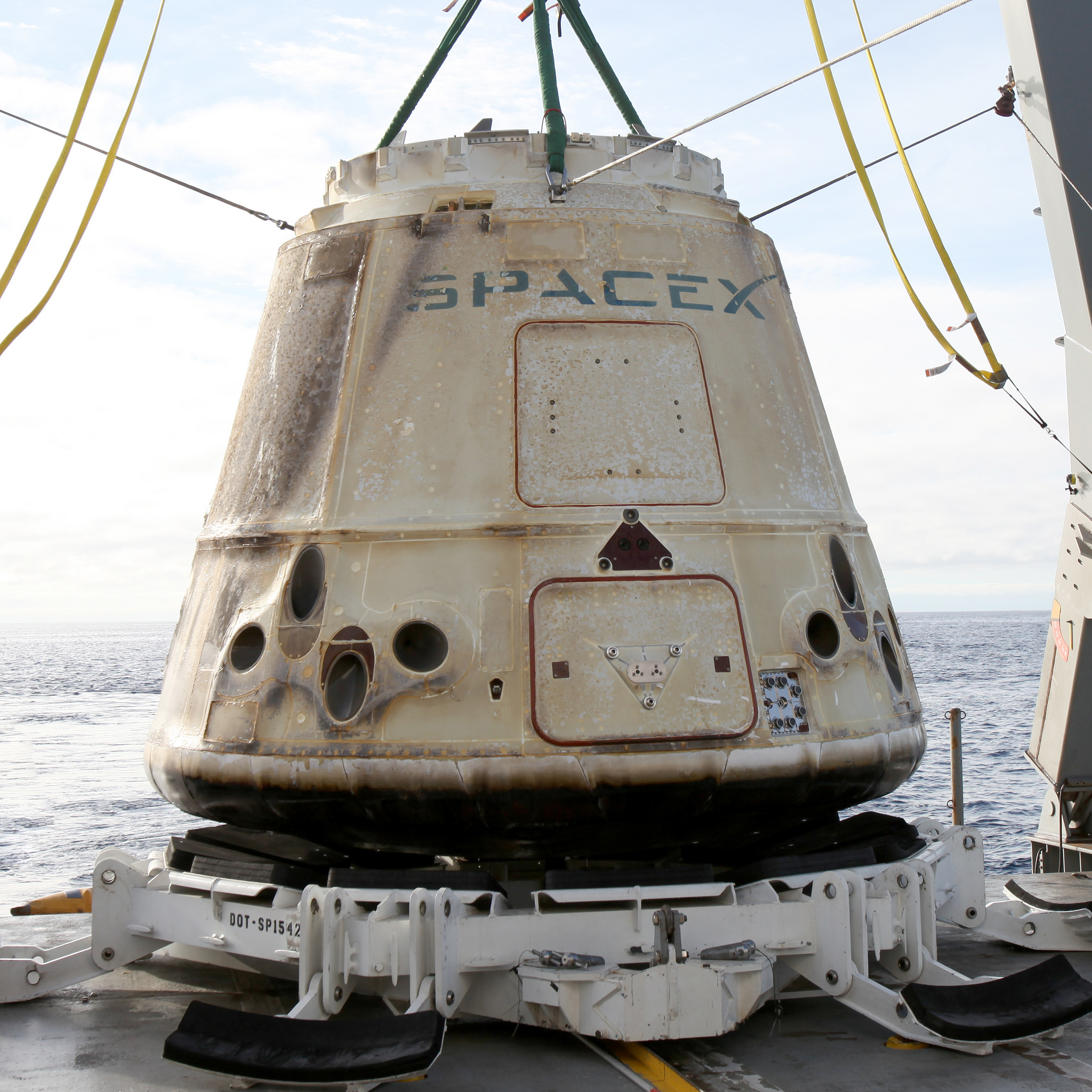SpaceX Dragon Cargo Ship Launches to Space Station Today. Here's How to Watch Live.
Update: SpaceX has successfully launched a Dragon cargo ship filled with NASA cargo to the International Space Station. The attempted landing of the mission's first-stage booster, however, did not succeed. Read our full story.
Original story: SpaceX is set to launch a cargo mission to the International Space Station and land a rocket back on Earth today (Dec. 5), and you can catch all the action live.
A Falcon 9 rocket is scheduled to launch a robotic Dragon capsule toward the orbiting lab from Florida's Cape Canaveral Air Force Station at 1:16 p.m. EST (1816 GMT); the two-stage rocket's first stage will also attempt to land back at Cape Canaveral shortly after liftoff. You can watch it live here at Space.com, courtesy of NASA, beginning at 1 p.m. EST (1800 GMT).
You can also watch directly via NASA or SpaceX, both of which will webcast the launch. [Gallery: Inside Dragon, SpaceX's Private Spacecraft]
Today's Falcon 9 liftoff will come just 48 hours after a Falcon 9 launched 64 small satellites to orbit from Vandenberg Air Force Base in California. The gap between the two launches was suppposed to be just 24 hours, but the Dragon launch was delayed a day because mouse food going up with a rodent-research experiment was found to be moldy and had to be replaced.
The Dragon will deliver more than 5,600 lbs. (2,540 kilograms) of food, supplies and scientific experiments to space station crewmembers on SpaceX's 16th cargo mission under a contract with NASA.
The research gear includes the Global Ecosystem Dynamics Investigation (GEDI), an instrument that will measure forest canopy heights around the globe; the Robotic Refueling Mission 3 (RRM3), which will demonstrate technologies intended to top up satellites' tanks in space; and the aforementioned mouse experiment, known as Rodent Research-8, which is designed to help scientists better understand the mechanisms behind aging and how it contributes to disease.
Get the Space.com Newsletter
Breaking space news, the latest updates on rocket launches, skywatching events and more!

There's a 90 percent chance that the weather will be good enough for a Falcon 9 liftoff today, launch weather officer Clay Flynn, of the U.S. Air Force's 45th Space Wing, said during a pre-launch news conference Monday.
The two-stage Falcon 9 launching today is a brand-new vehicle, though the Dragon has visited the station once before, during the CRS-10 (Commercial Resupply Services-10) mission in early 2017. SpaceX prioritizes reuse of its space vehicles, viewing re-flight as key to lowering the cost of spaceflight enough to enable ambitious exploration feats.
The Falcon 9 that launched Monday featured a first stage that had already flown on two orbital missions — a first for the company.
If all goes according to plan, the Dragon will reach the space station three days from now. Its arrival will bring the number of visiting spacecraft at the orbiting lab to six. Also attached to the International Space Station are three robotic cargo ships — Northrop Grumman's Cygnus vessel and two Russian Progress freighters — and two Soyuz crew spacecraft.
The Dragon is scheduled to come back to Earth for an ocean splashdown in mid-January.
Mike Wall's book about the search for alien life, "Out There" (Grand Central Publishing, 2018; illustrated by Karl Tate) is out now. Follow him on Twitter @michaeldwall. Follow us @Spacedotcom or Facebook. Originally published on Space.com.
Join our Space Forums to keep talking space on the latest missions, night sky and more! And if you have a news tip, correction or comment, let us know at: community@space.com.

Michael Wall is a Senior Space Writer with Space.com and joined the team in 2010. He primarily covers exoplanets, spaceflight and military space, but has been known to dabble in the space art beat. His book about the search for alien life, "Out There," was published on Nov. 13, 2018. Before becoming a science writer, Michael worked as a herpetologist and wildlife biologist. He has a Ph.D. in evolutionary biology from the University of Sydney, Australia, a bachelor's degree from the University of Arizona, and a graduate certificate in science writing from the University of California, Santa Cruz. To find out what his latest project is, you can follow Michael on Twitter.









